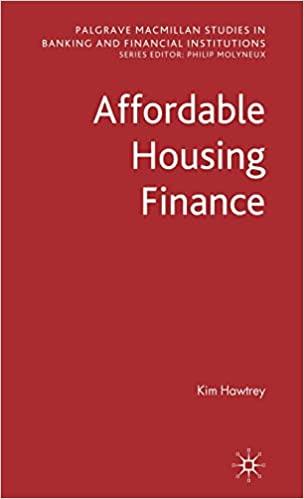Question
A firm has the following investment alternatives. Each costs $13,000 and has the following cash inflows. Year Cash Inflow 1 2 3 4 A $
A firm has the following investment alternatives. Each costs $13,000 and has the following cash inflows.
| Year | ||||||||||||
| Cash Inflow | 1 | 2 | 3 | 4 | ||||||||
| A | $ | 4,300 | $ | 4,300 | $ | 4,300 | $ | 4,300 | ||||
| B | 3,500 | 5,000 | 4,500 | 4,000 | ||||||||
| C | 6,000 | 4,700 | 3,000 | 2,000 | ||||||||
Investment A is considered to be typical of the firms investments. Investment Bs cash flows vary over time but are considered to be less certain. Investment Cs cash flows diminish over time but because most of the cash flows occur early in the investments life, they are considered to be more certain. The firms cost of capital is 10 percent, but the financial manager uses a hurdle rate of 8 percent for less-risky projects and 12 percent for riskier projects. Use Appendix B and Appendix D to answer the questions. Assume that the investments are not mutually exclusive and there are no budget restrictions.
- Based on the cost of capital, should any of the investments be made? Use a minus sign to enter negative values, if any. Round your answers to the nearest dollar.
NPV(Investment A): $
NPV(Investment B): $
NPV(Investment C): $
- If the financial manager uses a risk-adjusted cost of capital, should any of the investments be made? Use a minus sign to enter negative values, if any. Round your answers to the nearest dollar.
NPV(Investment A): $
NPV(Investment B): $
NPV(Investment C): $
Step by Step Solution
There are 3 Steps involved in it
Step: 1

Get Instant Access to Expert-Tailored Solutions
See step-by-step solutions with expert insights and AI powered tools for academic success
Step: 2

Step: 3

Ace Your Homework with AI
Get the answers you need in no time with our AI-driven, step-by-step assistance
Get Started


